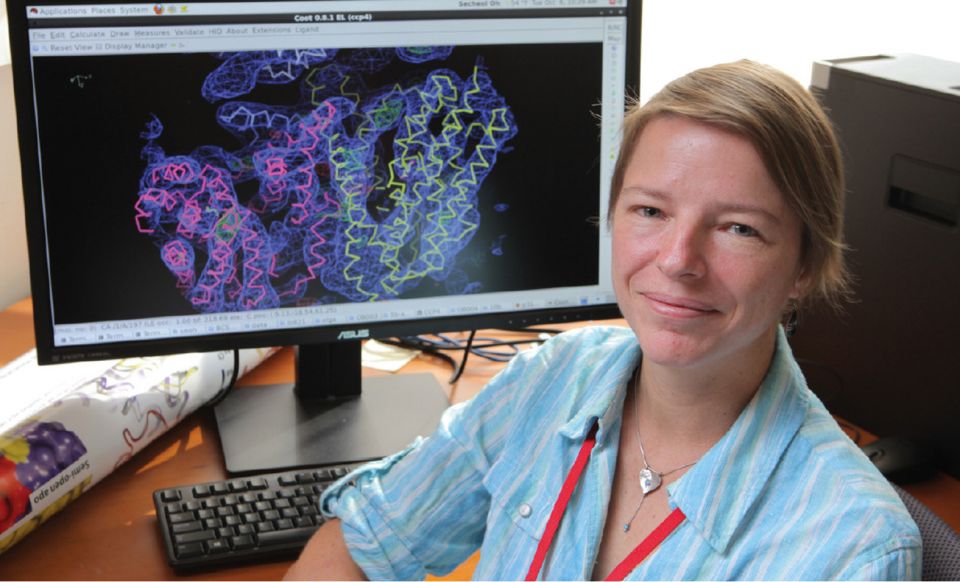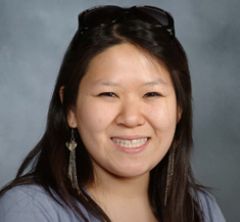
Overview
Graduate programs at Weill Cornell Graduate School in BCMB are in Biochemistry, Structural Biology, Cell Biology, Developmental Biology and Molecular Biology are collectively known as the BCMB Allied program and operate as an alliance. Students may affiliate with any of the three BCMB programs, but they initially are admitted to, and remain members of, the BCMB Allied program.
The BCMB program offers opportunities for advanced training in the application of biochemical, structural, biophysical and imaging methods, to addressing questions relating to biological processes and mechanisms. Program members pursue vigorous research programs in the areas of membrane-protein structure and function, membrane trafficking and synaptic transmission, protein folding, intracellular and cell-surface signaling pathways, protein modification, membrane biochemistry and biophysics, DNA replication and repair, and RNA silencing and processing.
Many of the faculty conduct collaborative research bringing together knowledge and talent from different areas to focus on human diseases, such as cancer and neurodegenerative diseases. In this respect, research is focused on: understanding the roles of various signaling pathways in cancer, atherosclerosis and inflammation; the role of defective DNA repair in cancer-predisposition; and the link between defective protein folding and diseases, such as Alzheimer's and Parkinson's.
More than 30 faculty, who are members of Weill Cornell Medical College (WCMC) or the Sloan-Kettering Institute (SKI, part of Memorial Sloan-Kettering Cancer Center) are affiliated with the program.
Membrane-related processes are one of the major research focuses of the program faculty. This includes areas such as synaptic transmission and neuronal circuitry, interaction of macrophages with lipoproteins leading to atherosclerotic lesions, interaction of cells with the proteins that form Alzheimer's disease plaques, and the insulin-regulated membrane trafficking of the GLUT4 glucose transporter between the interior and surface of the cell. The methods used range from optical imaging to detailed three-dimensional structural information obtained by x-ray crystallography and NMR spectroscopy. Research tools available include digital imaging devices, confocal microscopy, multiphoton microscopy, automated microscopy systems, computational methods, theoretical models and chemical methods. In this area, in vivo imaging studies of synaptic proteins and their dynamics are aimed at understanding processes such as presynaptic vesicle traffic, transmitter-activated G protein-coupled receptors (GPCRs) and synaptic transmission. X-ray crystallographic and biochemical studies are aimed at investigating the macromolecular machinery that control vesicular transport, including the mechanisms of carrier vesicle formation, cargo loading, accurate delivery, neurotransmitter release and membrane recycling.
Other structural studies are focused on the cell-surface receptors and other neuronal signaling proteins that mediate axon guidance and neuronal development. These research programs are complemented by a strong focus on the structure determination of membrane proteins such as ion channels and transmembrane transporters. The structural findings are typically extended by electrophysiological methods, spectroscopy and theoretical/computational approaches.
In the area of signaling, a wide range of biochemical, structural and imaging approaches are used to investigate processes such as nitric oxide signaling in atherosclerosis and thrombosis; the post-translational modification of proteins by ubiquitin (Ub) and ubiquitin-like (Ubl) modifiers; and the roles of, in DNA-repair, and in nuclear transport, the protein-protein interactions that govern the histone/epigenetics code; and signaling by the tumor necrosis factor receptor (TNFR) pathways in cellular homeostasis, immune response and apoptosis.
Nucleic acid structure, function and metabolism are investigated using in vitro biochemistry and structural biology, complemented by cell biology and genetics. Studies of DNA replication, both in eukaryotic and in simpler prokaryotic model systems, are focused on understanding the enzymatic activities such as polymerases, helicases, primases and topoisomerases required for replication; the firing of replication origins and their coordination with the cell cycle; and the processes of chromosome segregation and cytokinesis. Studies of DNA repair and genomic integrity are focused on the macromolecular processes that detect the wide range of lesions that affect DNA, as well as on specific repair processes. These include nucleotide excision repair, DNA-double strand break repair by homologous recombination and the related process of meiotic recombination. As many of these repair processes are associated with cancer predisposition, investigators of DNA repair and replication have a strong interest in cancer biology as well.
Studies of RNA-related processes encompass the ribosome, RNA processing and decay, RNA silencing and riboswitches. Investigators are utilizing single-molecule methods to monitor conformational and compositional processes on the ribosome that regulate protein synthesis, and x-ray crystallography to investigate the structures and functions of the major macromolecular machines that act on RNA. These include the mRNA capping apparatus, the eleven-subunit exosome RNA-decay particle and the Argonaute RNA silencing complex.
Program Requirements
Admissions
Ph.D. students are admitted to the Biochemistry and Structural Biology program through the BCMB Allied program. Applicants are not required to take the take the Graduate Record Examination (GRE). Applicants whose native language is not English are required to take the TOEFL examination.
All applications must be submitted online.
Becoming a Doctoral Candidate
In their first year, BCMB Allied students take the program's core curriculum courses in molecular genetics, biochemistry and structural biology, cell biology, gene structure/function, and logic and critical analysis. A course list and course descriptions are available at: Courses.
Lab rotations are an important component of the students' first year as well. Each student completes three laboratory rotations, which help him/her decide on a research focus and select a thesis mentor by the end of the first year.
The choice of a mentor determines the student's program assignment: Biochemistry & Structural Biology, Cell and Developmental Biology, or Molecular Biology. The mentor helps the student select his/her Special Committee, consisting of the mentor and two other faculty members knowledgeable in the student's research field. The committee evaluates the student's research and progress through the rest of his/her WCGS career. Selection of the mentor and the committee typically occurs before the student starts the second year of study.
In spring semester of the second year, the student takes the Admission to Doctoral Candidacy Examination (ACE), which includes a written component (a research proposal) and an oral examination, in which the student defends the proposal and demonstrates general knowledge. Committees made up of program faculty members administer the written and oral ACE. When a student passes the ACE, she/he is a candidate for the PhD degree.
Ph.D. Research and Degrees
Within six months of passing the ACE, the student must submit a five-page thesis project description to the Special Committee and meet with the committee for its approval. Thereafter, the student and the committee meet together regularly - at least annually - from year two until the student's graduation.
During the second through fourth years, while working in the laboratory, the student must also complete one elective course (two quarters) and participate in in-depth focus groups, which examine topics relevant to the fields of biochemistry, cell biology and molecular biology.
The culmination of the student's successful progression through the program is the final examination (the "defense") and certification by the Special Committee that the thesis represents an official piece of research satisfying the requirements of the WCGS for the PhD degree.

